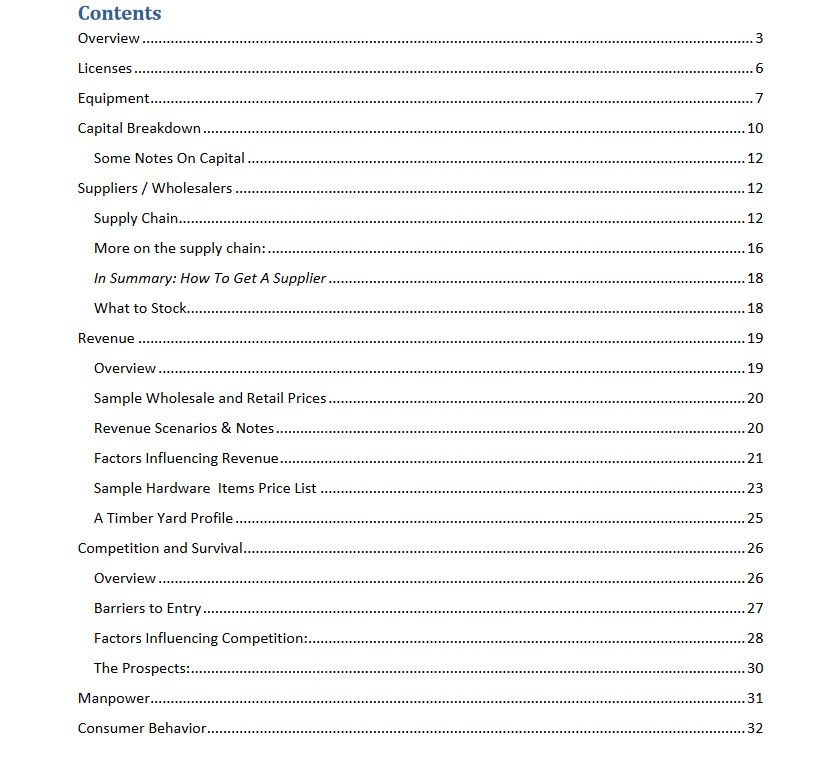Timber Retail Business Plan
Timber Retail Business

Timber Retail Business Plan Overview
This Timber Retail Business Plan is about business of selling timber in retail as represented by yards in various parts of the country. A yard being an open space where timber of various sizes and kinds are laid for the customers to come and buy. This could be round timber or as is common among retailers sawn timber.
The key customers in the Timber retail business are:
- Building and Construction industry both at a private and commercial level.
- Furniture industry; ranging from small and medium size jua kali carpenters who make household items , professional carpenters, coffin makers and other handy men.
Demand for timber is driven by a growing population, positive economic growth, urbanization and expanding consumer tastes. These factors influence investment in the building sector and furniture. The construction industry has been growing since 2009. In 2012 the sector recorded a 4.8 % growth, while the total value of new private buildings completed up by 9.6 per cent from Kshs 46.4 billion in 2011 to Kshs 50.8 billion in 2012. Whereas the output of the Kenya building and construction industry in 2014 was 13.1 %, against 5.8% in 2013. Though the latter statistics also include public work projects like roads the industry has been expanding.
Even beyond the statistics a casual observation will indicate that there has been an increase in construction activity not only in Nairobi but also counties. Increasing spending on roads means that hitherto ‘remote and awkward’ areas are opening up, and residential and commercial developments coming up in tandem.
Away from building and construction the furniture industry is also growing and is estimated to be worth $500 million and is expected to grow at a rate of 8% until 2024. This according to the government. An expansion of the industry means the demand for timber which is a core input will continue growing.
According to the Kenya Forest Service (KFS) Kenya has a total forest land area of 15,189 million hectares with 10.383 million hectares being private farms. These farms supply a significant number of local timbers. For timber traders the challenge is the bulking, bias towards particular trees and lack of constituency. Only 0.107 hectares are allocated for timber production.
In 1999 the government imposed a ban on logging in public forests. This however did not affect 3 major players in the industry who were said to adhere to the required logging standards these were; Timsales, Raiply and Comply. Though word had it that they enjoyed political protection.
The ban led to a triple increase in the price of timber and massive importation of timber from Tanzania, Malawi, and DRC to fill the gap created by the curtailing of local timber supplies. The ban was lifted albeit not very officially in 2011 and logging limited to prequalified individuals and companies.
However due to the increased demand for timber that has happened over the last few years, the perceived policy stability as regards forests, and reliability of supplies from the above countries imports remains a major source of timber consumed in Kenya.
Despite changes in technology the growth in the construction industry has ensured there is a steady demand for timber. We predict the demand will continue increasing for the next 7 years.
Download Timber Retail Business Plan / guide here